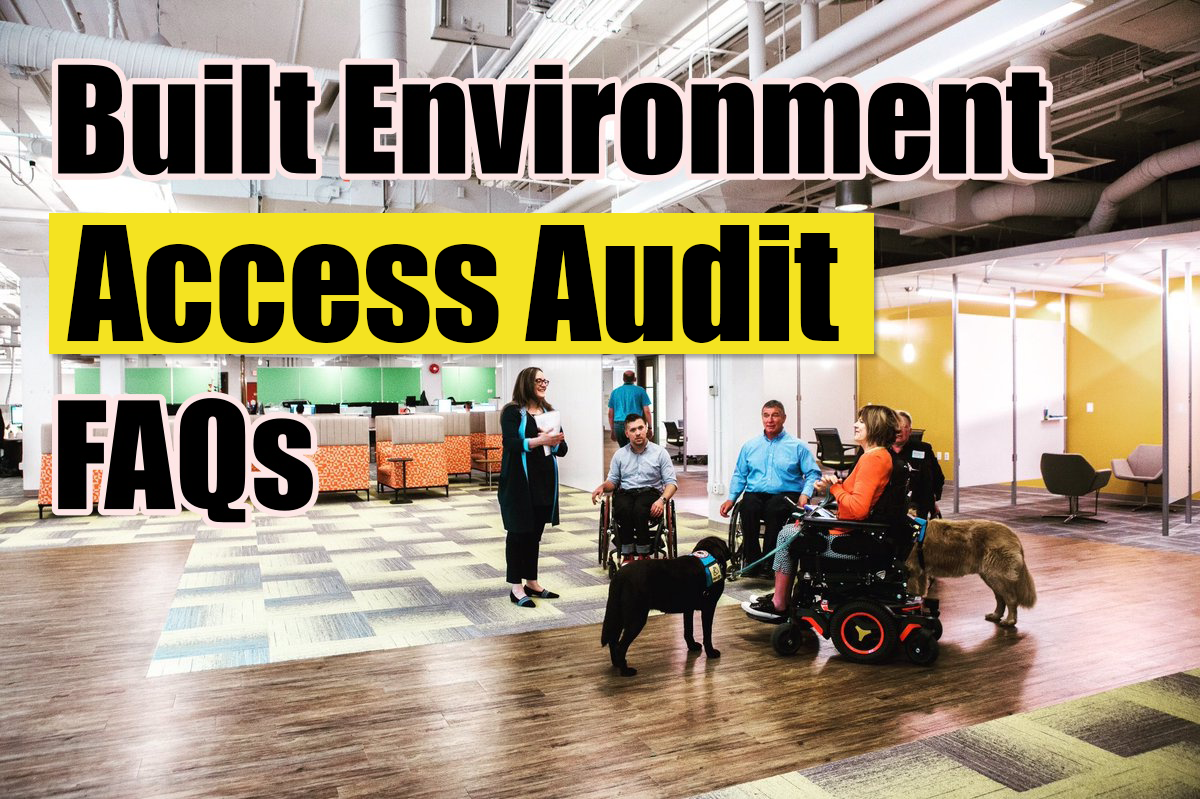
DEOC’s Principal Architect, Ruchira Sarin, who specialises in universal design, has answered a few frequently asked questions on Disability Access Audits for built environment.
What is Access Audit of a building?
An access audit is a method of evaluating a building/infrastructure against pre-determined standards to identify the barriers as well as good features in its design/functionality. An access audit is conducted by trained professionals/accessibility experts as is recognized in the National Building Code (NBC) of India. It is not limited to existing infrastructure/buildings but could span across proposed buildings where it takes form of a design appraisal.
What are the accessibility standards followed in India for built environment?
In India there are
- Harmonised Guidelines and Space Standards for Barrier-Free Built Environment for persons with Disability and Elderly Persons laid down by Ministry of Urban Development, which is the standard as per the RPWD Act, 2016.
- National Building Code (NBC) 2016 includes provisions/standards for accessibility in all the relevant parts apart from Annex-B, Part-3, which looks at accessibility in greater detail.
Why should a company do an Access Audit?
Companies should undertake access audits, as it is mandated by the law. The Rights of Persons with Disabilities Act (RPWD Act) 2016 mandates that all establishments should ensure that all their buildings are accessible as per standards (refer to above question for standards). Access audit is the first step towards improving accessibility of built-environment. It is also mandated by NBC, 2016, which states periodic access audits should be carried out.
What does the RPWD Act say regarding built environment?
The RPWD Act 2016 provides the following mandate with respect to built environment:
- Clause 44 states that no establishment shall be granted permission to build any structure if the building plan does not adhere to standard. The establishment will not be issued a certificate of completion or allowed to take occupation if they do not adhered to the standards.
- Clause 45 states that all existing public buildings shall be made accessible in accordance with standards within a period of five years.
- Clause 46 mandates the service providers (including private players) to make the services accessible in 2 years time.
Is the law applicable for the private companies also? It mentions the term “public buildings” in the Act.
Yes, the law is very much applicable to private companies.
The definition of “public buildings” includes buildings privately owned as well. Please refer to the definition of public buildings given in the Act.
“Public building” means a Government or private building, used or accessed by the public at large, including a building used for educational or vocational purposes, workplace, commercial activities, public utilities, religious, cultural, leisure or recreational activities, medical or health services, law enforcement agencies, reformatories or judicial foras, railway stations or platforms, roadways bus stands or terminus, airports or waterways;
There are employees with disabilities in our company. Can we ask them to do the audit?
Accessibility is a technical field. NBC, 2016 recognises an Accessibility Expert along with a list of professionals engaged in construction of a building. Those who do audits should be well versed with the fine prints of the standards and be able to make recommendations to meet the standards. While users with disabilities could bring in perspective on their day to day challenges, which is an important aspect of the audit. However, they may not be aware of the standards and challenges that other people with disabilities might face, which may result into a half-baked access audit.
Are there different types of audits?
Yes, while a full access audit encompassing the methodology described in previous question is preferred, sometimes due to limitation of time and resources, a walk and talk audit could be conducted. This gives the clients a broad level understanding of action items. It is recommended as a prelude to an event, an employee joining the organization etc.
Apart from this, a design appraisal or a blue print access audit is recommended for any upcoming project to flag-off the barriers before a building is built. It is a very cost-effective method of ensuring accessibility in a built environment.
What are the next steps after access audit?
An access audit is just the beginning and not an end in itself. The next steps involve forming an access board involving all stakeholders, putting together an implementation plan based on access audit findings, working on relevant designs/details/BOQs, involving relevant vendors and implementing changes on ground.
Is there any certifying body?
No at present there is no certification for accessibility in place in India.
What services are offered by DEOC in the area of accessibility of built environment?
DEOC has a legacy into accessibility of built environment. Our qualified team of professionals is a mix of architect specialists in universal design and disability experts. We conduct access audits for existing buildings, design appraisals for proposed infrastructure and also provide implementation consultancy to our clients to implement the access audit recommendations.
